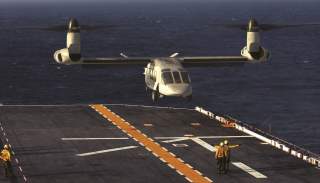The U.S. Army Wants Its Own "Stealthy" Weapon in the Air
While developers stop short of calling the new project a “stealth” helicopter, they do acknowledge they are engineering “stealthy” characteristics.
As of January of this year, Bell engineers are 81-percent complete with the aircraft; the wing is attached and the wiring is put in, Tobin said. In the next few months, Bell engineers will begin installation of the gear boxes and the fuel tanks.
Ground vibration testing is also slated to take place in coming months, to be followed by scale-model wind-tunnel data.
In addition, the future aircraft is intended to be able to use fuel-efficient engine technology to allow an aircraft to travel at least 800 kilometers on a single tank of fuel. Such an ability will enable the aircraft to operate more easily one a single mission without needing Forward Arming and Refueling Points, or FARPs.
The idea is to engineer and aircraft able to fly from the west coast to Hawaii without needing to refuel.
“FVL is a high priority. We have identified capability gaps. We need technologies and designs that are different than what the current fleet has. It will carry more equipment, perform in high-hot conditions, be more maneuverable within the area of operations and execute missions at longer ranges,” Rich Kretzschmar, project manager for the FVL effort, told Scout Warrior in an interview several months ago.
Requirements for the program are still being refined for the Army-led program, which is aimed at service future aircraft for all four services.
These requirements, now being put into actual demonstrator aircraft built by both Bell and a Boeing-Sikorsky industry teams, include building and aircraft able to reach speeds greater than 230 knots, hover in thin air at 6,000-feet and 95-degrees Fahrenheit, achieve a combat radius of at least 434 kilometers and be configured to include emerging sensors and mission equipment technologies likely to emerge by the 2030s.
“We had set 230 as the speed requirement because we wanted to push the technology. We wanted people to bring new ideas and new configurations to the table,” Bailey said.
This first appeared in Scout Warrior here.

